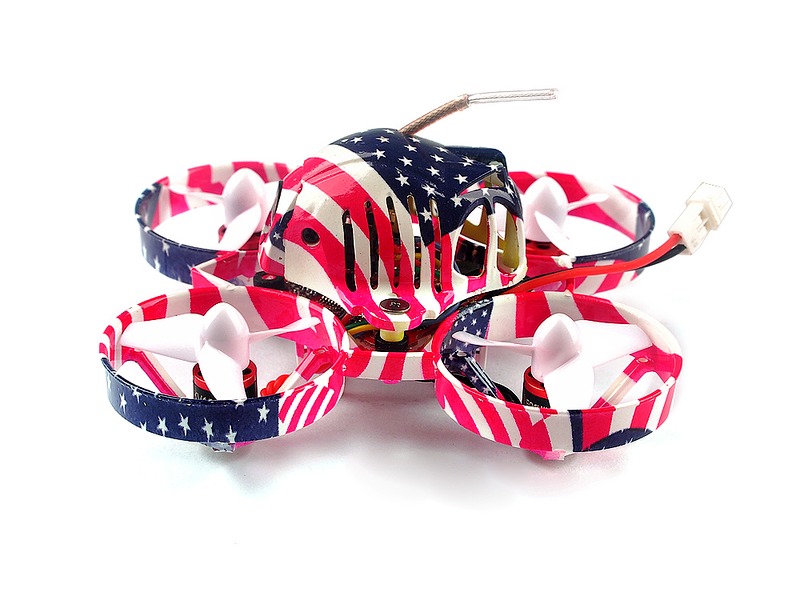What is the science behind quadcopter?

The science behind quadcopters is a fascinating and complex topic. Quadcopters are a type of unmanned aerial vehicle (UAV) that are propelled by four rotors. They are capable of hovering, vertical take-off and landing, and can be used for a variety of applications such as photography, surveillance, and search and rescue.
At the heart of the quadcopter is its flight control system. This system is responsible for controlling the speed and direction of the rotors, as well as the overall stability of the quadcopter. The flight control system is made up of several components, including a flight controller, sensors, and motors.
The flight controller is the brain of the quadcopter. It is responsible for interpreting the data from the sensors and sending commands to the motors to adjust the speed and direction of the rotors. The flight controller is typically a microcontroller, which is a small computer that is programmed to interpret the data from the sensors and send the appropriate commands to the motors.
The sensors are responsible for gathering data about the quadcopter’s environment. This includes data about the quadcopter’s altitude, speed, and orientation. The most common sensors used in quadcopters are accelerometers, gyroscopes, and magnetometers. These sensors measure the acceleration, angular velocity, and magnetic field of the quadcopter.
The motors are responsible for providing the thrust that propels the quadcopter. The motors are typically brushless DC motors, which are more efficient and reliable than traditional brushed motors. The motors are connected to the propellers, which generate the thrust that propels the quadcopter.
In addition to the flight control system, quadcopters also contain a power system. This system is responsible for providing the power to the motors and other components of the quadcopter. The power system typically consists of a battery, an electronic speed controller (ESC), and a power distribution board. The ESC is responsible for controlling the speed of the motors, while the power distribution board is responsible for distributing the power to the various components of the quadcopter.
The science behind quadcopters is a fascinating and complex topic. Quadcopters are capable of performing a variety of tasks, from photography to search and rescue. The flight control system, sensors, motors, and power system are all essential components of the quadcopter that work together to make it fly. Understanding the science behind quadcopters is essential for anyone who wants to build or operate one.
Comments / Question
2. Make sure the quadcopter is in good condition and all parts are secure before flying.
3. Check the weather conditions before flying and avoid flying in strong winds.
4. Keep the quadcopter in sight at all times.
5. Fly at a safe altitude and speed.
6. Avoid flying near airports or other restricted airspace.
7. Follow all local laws and regulations when flying.
8. Wear protective gear such as goggles and gloves.
9. Make sure the battery is fully charged before flying.
10. Keep the quadcopter away from power lines and other electrical hazards.
1. Quadcopters are relatively easy to fly, making them ideal for beginners.
2. They are highly maneuverable and can be used for aerial photography and videography.
3. They are relatively quiet, making them suitable for use in urban areas.
4. They are relatively affordable and require minimal maintenance.
5. They are small and lightweight, making them easy to transport and store.
Disadvantages:
1. Quadcopters are not as fast as other types of aircraft.
2. They have limited range and endurance due to their small battery capacity.
3. They are more susceptible to wind and weather conditions than other types of aircraft.
4. They are not as durable as other types of aircraft, and may require frequent repairs.
5. They require more skill to fly than other types of aircraft.
1. Motors: Motors are responsible for providing thrust and directional control. Depending on the rotational direction, the motors can produce thrust in any direction to make the drone move or turn in the desired direction.
2. Propellers: Propellers provide lift and thrust when rotated by the motors. The speed and direction of the propellers are controlled by the motors and the onboard flight controller.
3. Flight Controller: The flight controller is the brain of the quadcopter. It is responsible for controlling all the motors and propellers to ensure the drone moves and turns as desired. The flight controller is typically programmed using a computer and is responsible for keeping the drone stable in flight.
4. Battery: The battery powers the motors and flight controller and provides the thrust required to fly the quadcopter.
These components all work together to enable the quadcopter to take off and fly. The motors provide the thrust and directional control, the propellers generate lift, and the flight controller keeps the drone stable in flight. The battery is responsible for providing power to the motors and flight controller.

